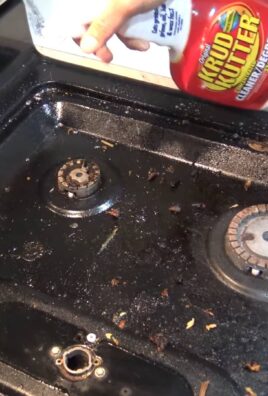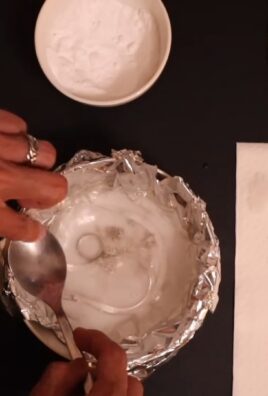Spotless home daily habits are the secret weapon in the fight against never-ending chores! Let’s be honest, who *really* enjoys spending their entire weekend scrubbing and cleaning? I certainly don’t! Imagine coming home after a long day to a space that feels fresh, inviting, and, well, spotless – without having to lift a finger beyond a few simple tasks. That’s the power of incorporating these habits into your daily routine.
For centuries, cultures around the world have understood the importance of a clean and organized living space. From the ancient practice of Feng Shui, which emphasizes harmony and balance through decluttering, to the minimalist lifestyles embraced in many modern societies, the desire for a tidy home is deeply ingrained in our human experience. But let’s face it, life gets busy, and maintaining a spotless home can feel like an impossible dream.
That’s where these DIY tricks and hacks come in! I’m going to share some easy-to-implement spotless home daily habits that will transform your living space from chaotic to calm. These aren’t about drastic overhauls or hours of scrubbing; they’re about small, consistent actions that add up to big results. Think of it as a preventative approach – tackling messes before they become overwhelming. So, ditch the weekend cleaning marathons and embrace a simpler, more sustainable way to keep your home sparkling!

Creating a Spotless Home: My Daily Habits for a Sparkling Space
Okay, let’s dive into my daily routine for keeping my home consistently clean and tidy. It’s not about spending hours scrubbing every day; it’s about incorporating small, manageable habits that prevent dirt and clutter from accumulating in the first place. Think of it as preventative maintenance for your home! I promise, once you get into the swing of things, it becomes second nature.
The Foundation: Daily Quick Clean-Up
This is the core of my spotless home strategy. It’s all about tackling the little messes before they become big problems.
- Make the Bed: Seriously, this is a game-changer. A made bed instantly makes a room look more put-together.
- Wipe Down Kitchen Surfaces: After every meal, I wipe down the countertops, stovetop, and sink. Spills and splatters are much easier to clean when they’re fresh.
- Sweep or Vacuum High-Traffic Areas: A quick sweep or vacuum in the kitchen, entryway, and hallways prevents dirt from being tracked throughout the house.
- Empty the Dishwasher (or Wash Dishes): Don’t let dishes pile up! Emptying the dishwasher in the morning or washing dishes after each meal keeps the kitchen clutter-free.
- One Load of Laundry: Doing one load of laundry every day prevents mountains of clothes from accumulating.
- Quick Tidy-Up: Spend 10-15 minutes putting things back where they belong. This could involve putting away toys, books, or mail.
Step-by-Step Guide to My Daily Cleaning Routine
Here’s a more detailed breakdown of how I tackle each task:
1. Making the Bed:
- Pull up the sheets: Start by pulling the fitted sheet taut and smoothing out any wrinkles.
- Arrange the top sheet and blankets: Fold the top sheet and blankets neatly over the edge of the bed.
- Fluff the pillows: Give your pillows a good fluff to restore their shape.
- Arrange the pillows: Place the pillows neatly at the head of the bed. You can arrange them in a symmetrical pattern or create a more relaxed look.
- Add a decorative touch (optional): Throw a decorative pillow or blanket across the bed for a pop of color and style.
2. Wiping Down Kitchen Surfaces:
- Gather your supplies: You’ll need a cleaning spray (I prefer a multi-surface cleaner or a simple solution of vinegar and water) and a clean microfiber cloth.
- Clear the countertops: Remove any items from the countertops, such as appliances, utensils, or food containers.
- Spray the surfaces: Spray the countertops, stovetop, and sink with your cleaning solution.
- Wipe down the surfaces: Use the microfiber cloth to wipe down all the surfaces, paying attention to any spills or splatters.
- Rinse the sink (if necessary): If you used a cleaning solution that leaves a residue, rinse the sink with water.
- Dry the surfaces: Use a clean, dry cloth to dry the surfaces. This will prevent water spots and streaks.
- Return items to their place: Once the surfaces are dry, return any items you removed to their original positions.
3. Sweeping or Vacuuming High-Traffic Areas:
- Gather your supplies: You’ll need a broom and dustpan or a vacuum cleaner.
- Clear the area: Remove any obstacles from the area you’re going to sweep or vacuum, such as rugs or furniture.
- Sweep or vacuum the floor: Sweep or vacuum the floor, paying attention to corners and edges.
- Empty the dustpan or vacuum cleaner: Empty the dustpan or vacuum cleaner into the trash.
- Replace any items you removed: Return any rugs or furniture you removed to their original positions.
4. Emptying the Dishwasher (or Washing Dishes):
- Empty the dishwasher: If you have a dishwasher, empty it after it’s finished running. Put away all the clean dishes in their designated places.
- Wash dishes by hand (if necessary): If you don’t have a dishwasher or if you have dishes that need to be washed by hand, wash them after each meal.
- Scrape off food: Scrape off any food scraps from the dishes before washing them.
- Wash the dishes with soap and water: Wash the dishes with hot, soapy water.
- Rinse the dishes: Rinse the dishes thoroughly with clean water.
- Dry the dishes: Dry the dishes with a clean dish towel or let them air dry.
- Put away the dishes: Put away the clean dishes in their designated places.
5. One Load of Laundry:
- Sort the laundry: Sort the laundry into whites, colors, and delicates.
- Load the washing machine: Load the washing machine with the sorted laundry.
- Add detergent: Add the appropriate amount of detergent to the washing machine.
- Start the washing machine: Start the washing machine on the appropriate cycle.
- Transfer the laundry to the dryer: Once the washing machine is finished, transfer the laundry to the dryer.
- Dry the laundry: Dry the laundry on the appropriate setting.
- Fold or hang the laundry: Once the laundry is dry, fold or hang it up immediately. This will prevent wrinkles.
- Put away the laundry: Put away the folded or hung laundry in its designated place.
6. Quick Tidy-Up:
- Grab a basket or bag: This will be your “catch-all” for items that are out of place.
- Walk through each room: Quickly scan each room and pick up any items that don’t belong.
- Put items in the basket/bag: Place the items in your basket or bag.
- Return items to their place: Once you’ve collected all the items, go through the basket/bag and put each item back where it belongs.
- Focus on high-impact areas: Pay special attention to areas that tend to accumulate clutter, such as the entryway, coffee table, and kitchen counters.
Weekend Deep Clean: Taking it to the Next Level
While the daily habits keep things manageable, I also dedicate a little more time on the weekends for a deeper clean. This usually takes me a couple of hours, but it makes a huge difference.
- Bathrooms: Scrub toilets, showers, and sinks. Clean mirrors and floors.
- Kitchen: Clean the inside of the microwave, wipe down appliances, and mop the floor.
- Dusting: Dust all surfaces, including furniture, shelves, and picture frames.
- Vacuuming/Mopping: Thoroughly vacuum or mop all floors.
- Changing Bed Linens: Wash and change all bed linens.
My Favorite Cleaning Supplies and Tools
I’m not a huge fan of harsh chemicals, so I rely on a few key cleaning supplies that are effective and eco-friendly.
- Microfiber Cloths: These are my go-to for everything! They’re great for dusting, wiping surfaces, and cleaning windows.
- Vinegar: A natural disinfectant and degreaser. I use it for cleaning countertops, floors, and even unclogging drains.
- Baking Soda: A gentle abrasive that’s perfect for scrubbing sinks and tubs.
- Dish Soap: A classic for washing dishes and cleaning various surfaces.
- Essential Oils: I add a few drops of essential oils to my cleaning solutions for a pleasant scent and added antibacterial properties. Lavender, lemon, and tea tree are my favorites.
- Vacuum Cleaner: A good vacuum cleaner is essential for keeping floors clean. I prefer a lightweight, cordless model for easy maneuverability.
- Mop: A microfiber mop is great for cleaning hard floors.
Tips and Tricks for Staying Motivated
Let’s be honest, cleaning isn’t always the most exciting activity. Here are a few things that help me stay motivated:
- Listen to Music or Podcasts: Put on your favorite tunes or an engaging podcast to make the time fly by.
- Set a Timer: Challenge yourself to complete a task in a certain amount of time. This can make cleaning feel

Conclusion
Achieving a spotless home through daily habits isn’t just about cleaning; it’s about creating a lifestyle that promotes cleanliness and order. This DIY approach, focusing on small, manageable tasks performed consistently, is a game-changer for anyone struggling to maintain a tidy living space. Forget the overwhelming weekend cleaning marathons! By incorporating these simple strategies into your daily routine, you’ll find that a consistently clean and welcoming home is not only achievable but also surprisingly effortless.
The beauty of this DIY method lies in its adaptability. Feel free to tailor these habits to fit your specific needs and preferences. For example, if you find yourself constantly battling clutter in your entryway, dedicate an extra five minutes each day to sorting through mail and organizing shoes. If the kitchen is your trouble spot, focus on immediately wiping down counters after each meal and loading the dishwasher as you go. Consider setting up a small cleaning station in high-traffic areas, stocked with essentials like microfiber cloths and all-purpose cleaner, to make quick cleanups even easier. You can even gamify the process by setting a timer and challenging yourself to complete a task within a certain timeframe.
This DIY approach to a spotless home is a must-try because it’s sustainable, efficient, and ultimately, less stressful. It shifts the focus from reactive cleaning to proactive maintenance, preventing dirt and clutter from accumulating in the first place. Imagine coming home each day to a space that feels fresh, organized, and inviting – a sanctuary where you can relax and recharge without the nagging feeling that you need to clean.
We encourage you to embrace these daily habits and experience the transformative power of a consistently clean home. Start small, be patient with yourself, and celebrate your progress along the way. Don’t be afraid to experiment with different strategies and find what works best for you and your household.
Most importantly, we want to hear about your experience! Share your tips, tricks, and challenges in the comments below. What daily habits have you found most effective? What obstacles have you encountered, and how have you overcome them? Your insights can inspire and empower others to create their own spotless homes through daily habits. Let’s build a community of clean-living enthusiasts and support each other on this journey to a more organized and fulfilling life. So, give it a try and let us know how it goes! We are confident that you will see a significant improvement in the cleanliness and overall atmosphere of your home.
Frequently Asked Questions (FAQ)
Q: How much time will these daily habits actually take?
A: That’s the best part – not much! Most of these habits are designed to be quick and efficient, taking just 5-15 minutes each day. The key is consistency. A few minutes of daily effort is far more effective than hours of sporadic cleaning. Think of it as an investment in your peace of mind and overall well-being. You’ll be surprised at how much you can accomplish in short bursts of focused activity. Plus, by preventing messes from accumulating, you’ll actually save time in the long run.
Q: What if I miss a day or two? Will all my progress be lost?
A: Absolutely not! Life happens, and it’s perfectly normal to miss a day or two. Don’t beat yourself up about it. Simply pick up where you left off as soon as you can. The important thing is to maintain the overall habit of daily cleaning. One or two missed days won’t undo all your hard work. Just get back on track and continue building momentum. Remember, consistency is key, but flexibility is also important.
Q: I have kids/pets. Will these habits even make a difference with all the extra mess?
A: Yes, they absolutely will! While kids and pets can certainly add to the mess, these daily habits can help you stay on top of it. In fact, they’re even more crucial in households with children and animals. Focus on high-impact areas like the kitchen, living room, and entryway. Involve your kids in age-appropriate cleaning tasks to teach them responsibility and help them develop good habits. For pet owners, regular vacuuming and spot cleaning are essential. Even small daily efforts can make a big difference in maintaining a clean and healthy home environment.
Q: What cleaning supplies do I need to get started?
A: You don’t need a lot of fancy or expensive cleaning supplies. A few basic essentials will suffice. These include:
* All-purpose cleaner: For wiping down surfaces.
* Microfiber cloths: For dusting and cleaning.
* Vacuum cleaner: For floors and carpets.
* Dish soap: For washing dishes.
* Glass cleaner: For windows and mirrors.
* Bathroom cleaner: For toilets and showers.You can also create your own DIY cleaning solutions using ingredients like vinegar, baking soda, and lemon juice. The key is to have these supplies readily available so you can easily tackle cleaning tasks as they arise.
Q: How do I stay motivated to stick with these daily habits?
A: Motivation can be tricky, but there are several strategies you can use to stay on track.
* Set realistic goals: Don’t try to do too much too soon. Start with a few simple habits and gradually add more as you get comfortable.
* Make it a routine: Incorporate these habits into your daily schedule so they become automatic.
* Reward yourself: Treat yourself to something you enjoy after completing your cleaning tasks.
* Track your progress: Use a checklist or app to monitor your progress and celebrate your achievements.
* Find an accountability partner: Enlist a friend or family member to help you stay motivated.
* Focus on the benefits: Remind yourself of the positive impact a clean home has on your mood, productivity, and overall well-being.Q: Can I adapt these habits to fit my specific needs and preferences?
A: Absolutely! This DIY approach is all about customization. Feel free to tailor these habits to fit your unique lifestyle and circumstances. If you have a small apartment, you may not need to vacuum as often as someone with a large house. If you work from home, you may need to focus more on keeping your workspace tidy. The key is to identify your specific needs and create a cleaning routine that works for you. Don’t be afraid to experiment and adjust as needed.
Q: What if I have a specific cleaning challenge, like a stubborn stain or a cluttered closet?
A: For specific cleaning challenges, it’s best to address them separately. These daily habits are designed to prevent messes from accumulating, but they may not be enough to tackle deep cleaning tasks. For stubborn stains, research specific cleaning solutions and techniques. For cluttered closets, dedicate a weekend to decluttering and organizing. Once you’ve addressed these specific challenges, you can then incorporate daily habits to maintain the cleanliness and organization you’ve achieved.
Q: Is this approach suitable for people with disabilities or mobility issues?
A: Yes, with some modifications. The key is to adapt the habits to your individual abilities and limitations. Focus on tasks that you can comfortably perform and don’t be afraid to ask for help with tasks that are more challenging. Consider using assistive devices, such as long-handled dusters or robotic vacuums, to make cleaning easier. Break down tasks into smaller, more manageable steps and take frequent breaks. The goal is to create a cleaning routine that is sustainable and doesn’t put undue strain on your body.
Q: How can I make these daily habits more eco-friendly?
A: There are many ways to make your cleaning routine more eco-friendly. Use natural cleaning products, such as vinegar, baking soda, and lemon juice. Reduce your use of paper towels by using microfiber cloths. Recycle cleaning product containers. Choose products with minimal packaging. Consider making your own cleaning solutions to reduce waste and save money. By making small changes to your cleaning habits, you can significantly reduce your environmental impact.





Leave a Comment